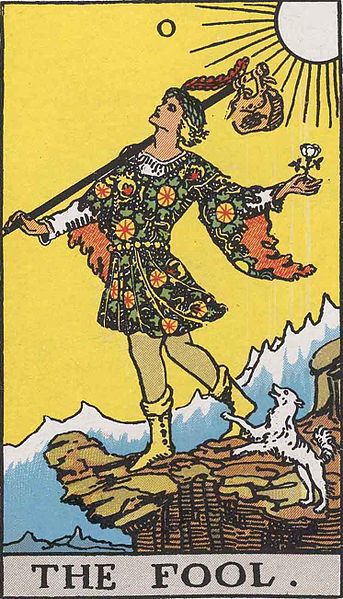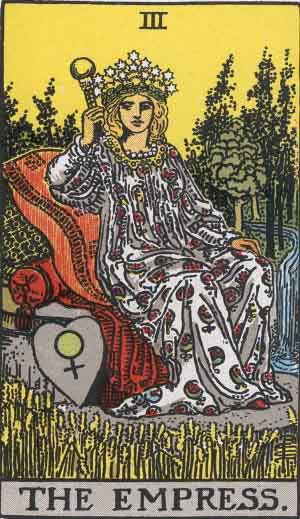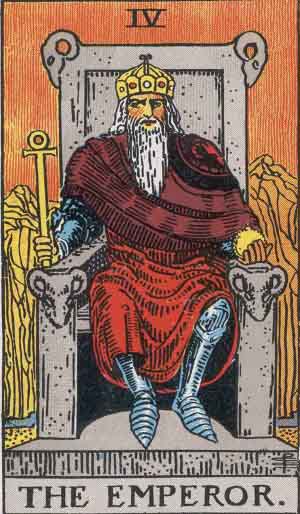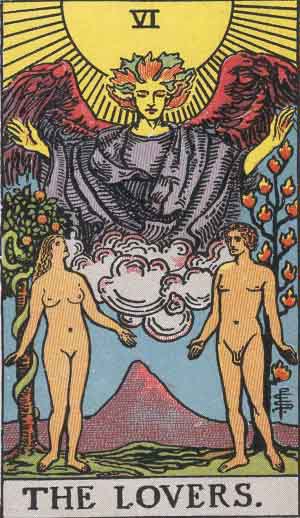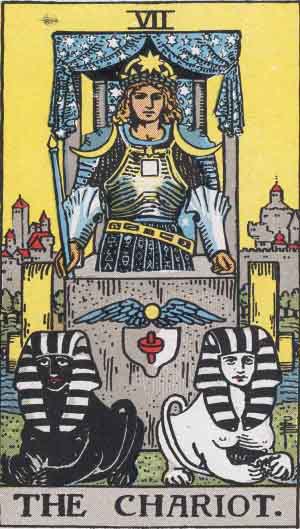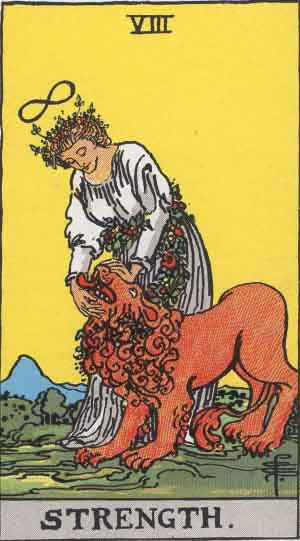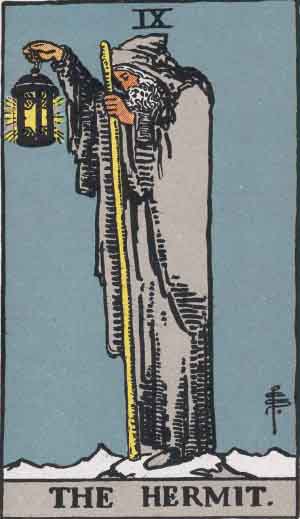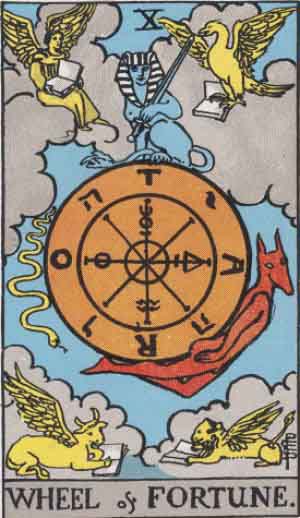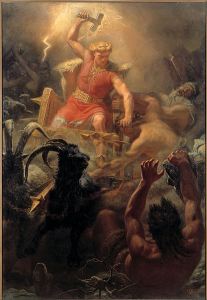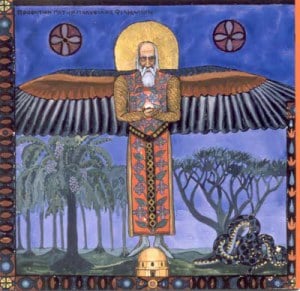Recently P. Sufenas Virius Lupus did a series of posts associating Pagan notables with Tarot cards. As a lover of Tarot myself, this seemed like a fun exercise, so I thought I’d try it. Of course, this exercise really says more about the people doing the associations than about the people being associated. Here’s my nominations for the Major Arcana. Many of the nominations come from Jason Mankey’s 3-part series, “25 Most Influential People in the Birth of Modern Paganism” and Jason Pitzl-Water’s 2009 article, ““The Brightest Lights in Our Sky: Today’s Most Influential Pagans”, in PanGaia #50.
A few notes: 1. As I said above, these associations really say more about the influence of these individuals on me than anything else. So don’t take it too seriously. (2) None of these associations are meant to be negative. Several of the cards in the Major Arcana are what you might call “dark” cards — i.e., Death — but all of them can have positive meanings. (3) The gender of the persons associated need not necessarily correspond to the “gender” of the card. In other words, a man can be the “High Priestess”. (4) This is a work in progress. I’d love to hear what you think.
0. The Fool (wild card, holy fool, madness, irony, outside the social order, Dionysus)
Aleister Crowley (1875-1947): occultist, ceremonial magician, founder of Thelema. Although not a Neopagan per se, Crowley’s influence is always dancing around the edges of Neopaganism. His influence on Gerald Gardner has been well documented. In 1915 Crowley urged on of his followers to found a new Pagan cult. He described what was to become Neo paganismquite accurately:
“I hope you will arrange to repeat this [a lunar ritual] all the time, say every full or new moon so as to build up a regular force. You should also have a Solar ritual to balance it, to be done each time the sun enters a new sign, with special festivities at the Equinoxes and the Solstices. In this way you can establish a regular cult; […] The time is ripe for a natural religion. People like rites and ceremonies, and they are tired of hypothetical gods. Insist on the real benefits of the Sun and Moon, the Mother-Force, the Father-Force and so on; and show that by celebrating these benefits worthily the worshipers unite themselves more fully with the current of life. Let the religion be Joy, with but a worthy and dignified sorrow in death itself; and treat death as an ordeal, an initiation. […] In short be the founder of a new and greater Pagan cult in the beautiful land which you have made your home. As you go on you can add new festivals of corn and wine, and all things useful and noble and inspiring.”
If you know anything about Crowley, I think it should be clear why I associate him with the Fool. Crowley’s writing might be compared to Nietzsche’s. Both writers were highly idiosyncratic, osbcure, and demonstrative. (Crowley is runner-up for the Devil card too.)
Runner-up: Harry (“Dion”) Byngham. Byngham was Pagan before Pagan was cool. He assumed control of the Order of Woodcraft Chivalry — a British proto-Pagan group — in 1922 and introduced phallic worship and naturism (nudity) to the Order. Byngham was influenced by Aleister Crowley. His order worked in same forest as Gardner’s alleged New Forest coven (although earlier). It also included ritual circle with four quarters corresponding to elements; three degrees of initiation; a horned god and moon goddess; and practiced ritual nudity. Members also referred to it as Witancraft (“Craft of the Wise”) (i.e., “craft” = woodcraft). Byngham reportedly read the poetry of Victor Neuburg (a disciple of Crowley) to invoke pagan deities. Byngham scandalized the Order by published naked photographs of himself and his girlfriend in the Order’s newsletter, The Pinecone. It is difficult to imagine a more Dionysian personality that Byngham.
1. The Magician (skill, production, creation, will, ambition, Hermes)
Israel Regardie (1907-1985): occultist, author, member of the Hermetic Order of the Golden Dawn. Israel Regardie is probably best known for publishing the (until then) secret ceremonies of the Hermetic Order of the Golden Dawn in his book The Golden Dawn (1937). Gerald Gardner built his Neo-Pagan witchcraft cult on the framework of the Golden Dawn system. Israel Regardie was one of the first authors (after Dion Fortune) to explain esotericism and magic in terms of psychology. In 1938, Regardie published The Middle Pillar, which was subtitled, “a co-relation of the principles of analytical psychology and the elementary techniques of magic.” The psychological explanation of ritual magic has been widely adopted by Neopagans.
Runner-up: Alex Sanders (1926-1988): founder of Alexandrian Wicca. His place as the founder of one of the three main branches of British Traditional Wicca and his influence on Stewart and Janet Farrar merits him a prominent place in the history of Neopaganism. I thought the Magician card was appropriate because of the greater influence of ceremonial magic in Alexandrian Wicca, as compared with Gardnerian Wicca.
2. The High Priestess (feminine face of religion, heterodoxy, mysticism, Queen of Heaven/Diana)
Doreen Valiente (1922-1999): Gardnerian High Priestess. Valiente’s influence on modern is hard to over-estimate. Valiente was initiated by Gardner and became his High Priestess. She worked to revise Gardner’s Book of Shadows and is the author of the most well-known piece of Neopagan liturgy, The Charge of the Goddess. She is credited with expanding role of the Goddess in Wiccan liturgy and of the High Priestess in Wiccan organization. Without Valiente’s influence, it is likely that the women’s spirituality movement of the 1970s would never have embraced Neopagan witchcraft and witchcraft would have remained an obscure esoteric tradition. She was also part of Robert Cochrane’s coven for a while and was an important influence of Janet and Stewart Farrar. It is hard to imagine anyone coming close to Valiente’s qualifications for the High Priestess card.
3. The Empress (mother, female sexuality, fertility, nurturing love, life, Demeter/Gaia)
Starhawk (1951-present): eco-feminist, activist, Neopagan witch, author. Starhawk’s book, The Spiral Dance, has probably introduced more people to Paganism than any other book, with the possible exception of Margot Adler’s Drawing Down the Moon. In the book, she brought together Robert Graves’ mythos, with eco-feminism, Jungian psychology, and Neopagan witchcraft. Neopaganism had been around for a decade before The Spiral Dance, but it brought together many of its disparate parts and defined the course of Neopaganism for the next two decades. Her activist spirit and poetic style earns her the place as the “Mother” of contemporary Neopaganism.
Runner-up: Robert Graves for his influence on the contemporary Pagan conception of the Goddess (see below).
Honorable Mention: Carol Christ (1945-present), feminist thealogian, author of “Why Women Need the Goddess”, Rebirth of the Goddess, and She Who Changes, for deepening the Pagan understanding of the Goddess.
Disonorable Mention: Jessie Wicker Bell/Lady Sheba, self-styled “American Witch Queen”
4. The Emperor (father, hierarchy, continence, law, order, enforcing distinctions, civilization, stability, Zeus/Yahweh)
Margot Adler (1946-present): Wiccan priestess, author. My choice of Adler for the Emperor card is not because of her personally, but because of her book, Drawing Down the Moon. Adler is an NPR correspondent and her book is a journalist’s account of the Neopagan community, the breadth of which is only matched by the appeal of its style. The book has gone through several revisions, and until Chas Clifton published Her Hidden Children in 2006, was really the only book on the subject. Adler’s book was published on same day as Starhawk’s book, October 31, 1979. The two books are very different: where Starhawk’s book is visionary and poetic, Alder’s is factual and journalistic. But the two books are often cited together as the books having the most influence on the growth of contemporary Neopaganism. And for that reason, I pair their authors together here with the Empress and Emperor cards.
Runner-up: Margaret Murray (1863-1963), author of The God of the Witches (1933), for her influence on the contemporary Pagan conception of the Horned God.
Dishonorable Mention: Alex Sanders, self-styled “King of the Witches”
5. The Hierophant (conventional religion, orthodox spirituality, tradition, dogma)
Gerald Gardner (1884-1964): founder of Gardnerian Wicca. Only one person could really be the Hierophant of Neopaganism, and that’s Gerald Gardner. Gardner needs no introduction here. Suffice it to say that he earned the Hierophant card both by virtue of being the first Wiccan High Priest and also because of his dictatorial personality (as documented by Doreen Valiente).
6. The Lovers (choice, indulgence, lust, appetite)
Oberon Zell (1942-present) and Morging Glory Zell (1948-present): founders of the Church of All Worlds. In 1967, the Church of All Worlds was incorporated by the Zells as the first Neopagan state-recognized “church”. Oberon is credited with anticipating James Lovelock’s Gaia Hypothesis by several years. The Church of All Worlds published the Green Egg newsletter, which becames the most important Neopagan forum for many years, and was instrumental in the formation of a emerging identity around the word “Neopagan”. A 1971 talk given by Morning Glory to a women’s group at the WorldCon science-fiction convention in Los Angeles is credited with initiating the Goddess movement. Oberon and Morning Glory earn the Lovers card for their open advocacy of polyamory and for their long commitment to one another.
Runners-up: Fred and Svetlana Adams founders of Feraferia, a “love culture for wilderness” dedicated to wild nature and its Goddess. Sarah Pike marks the founding of Feraferia in 1967, together with the founding of NROOGD, as the beginning of the Neopagan movement.
7. The Chariot (war, triumph, dominion, mastery, will, impetuosity, hubris, Ares)
Zsuzsanna Budapest (1940-present): founder of feminist witchcraft. Budapest earns the Chariot card because of her “militantly” exclusivist position on ritual. In the 1970s, she was controversial as the founder of the first women-only tradition of feminist “Dianic” witchcraft. In recent years, she has become controversial again because of her cis-women exclusivism.
8. Strength (fortitude, gentle persuasion, spirit controlling passion)
Selena Fox (1949-present): Wiccan priestess, leader in Pagan rights movement. Selena is the founder of Circle Sanctuary. Selena is the founder of the Pagan Spirit Gathering, one of the largest and oldest outdoor Pagan festivals. Selena is a model of gentle persuasion, leadership without domination, which the Strength card represents. (Selena is also tied with Starhawk for the Justice card.)
9. Hermit (wisdom, prudence, psychopomp, enlightenment)
Isaac Bonewits (1949-2010): Druid. Bonewits participated in many Neopagan traditions, not all of them druidic, including OTO, NROOGD, and Gardnerian Wicca. He was a leader in the early Neo-Druidry (RDNA) movement and was the founder of Ar nDraiocht Fein (ADF) which became the largest Neo-Druidic organization in North America. He founded the (short-lived) Aquarian Anti-Defamation League and developed a “Cult Danger Evaluation Frame”. He is credited with coining the term “thealogy” and the phrase “Never Again the Burning Times”. He also developed a unique classification of the Pagan community consisting of three categories: Paleo-, Meso-, and Neo-. The Hermit card is appropriate, I think, because Bonewits led the way in helping non-Pagans understand Pagans and helping Pagans understand themselves. In addition, the imagery corresponds in some ways to the archetypal druid.
Runners-up: Ross Nichols, Phillip Comm-Garr, and John Michael Greer
10. Wheel (fortune, rebirth, motion, chance)
Robert Graves (1895-1985): poet, author, classicist. Graves was not a Pagan himself, but he supplied Neopaganism with much of its mythos. What Graves called his “Theme” was “the birth, life, death and resurrection of the God of thee Waxing Year; the central chapters concern the God’s losing battle with the God of the Waning Year for love of the capricious and all-powerful Threefold Goddess, their mother, bride and layer-out.” This was the source of what became Neopaganism’s seasonal festival cycle, The Wheel of the Year.
Graves’ book, The White Goddess (1948), was the single most influential source of Goddess imagery for the modern Pagan revival. It is from Graves that Pagans get their concept of the Triple Moon Goddess which was adopted by the feminist Goddess movement. Graves’ Goddess influenced Gardnerian Wicca through Doreen Valiente. The White Goddess was also a significant influence on many other prominent Neopagans, including Robert Cochrane, the founder of the Clan of Tubal Cain, Fred Adams, the founder of Feraferia, Aidan Kelly, the founder of the New Reformed Order of the Golden Dawn (NROOGD), Z. Budapest, and Starhawk.
I see Graves, not Gerald Gardner, as the (unwitting) father of Neopaganism. In 1969, in an interview with The Paris Review, Graves observed that a “curious result” of the publication of The White Goddess was that “various White Goddess religions started in New York State and California. I’m today’s hero of the love-and-flowers cult out in the Screwy State, so they tell me”. Graves’ use of the term “White Goddess religions” to describe Neopaganism may not have been hyperbole or self-aggrandizement. In fact, Richard Perceval Graves reports that Elizabeth Gould-Davis, the author of The First Sex, corresponded with Graves for several years, and in 1973, she told him:
“I suppose you know that you are the God of the new Movement here, the newest of the new women’s movements, and you are the only male creature who is admitted to godhead in the movement. It has all sorts of names because it is not yet co-ordinated. Small groups from California to New York have formed to defy Christianity and all organized religion, to worship the female principle, and to bring back the Great Goddess.”
I associate Graves with the Wheel card because of the influence of his Theme of the seasonal cycle of the Goddess and her consort on the Neopagan mythos. (Graves is also a runner-up for the Empress card, because of the importance of his influence on the contemporary Pagan conception of the Goddess.)
Coming up: The nominees for the remaining 11 cards will be the subject of the next post.

